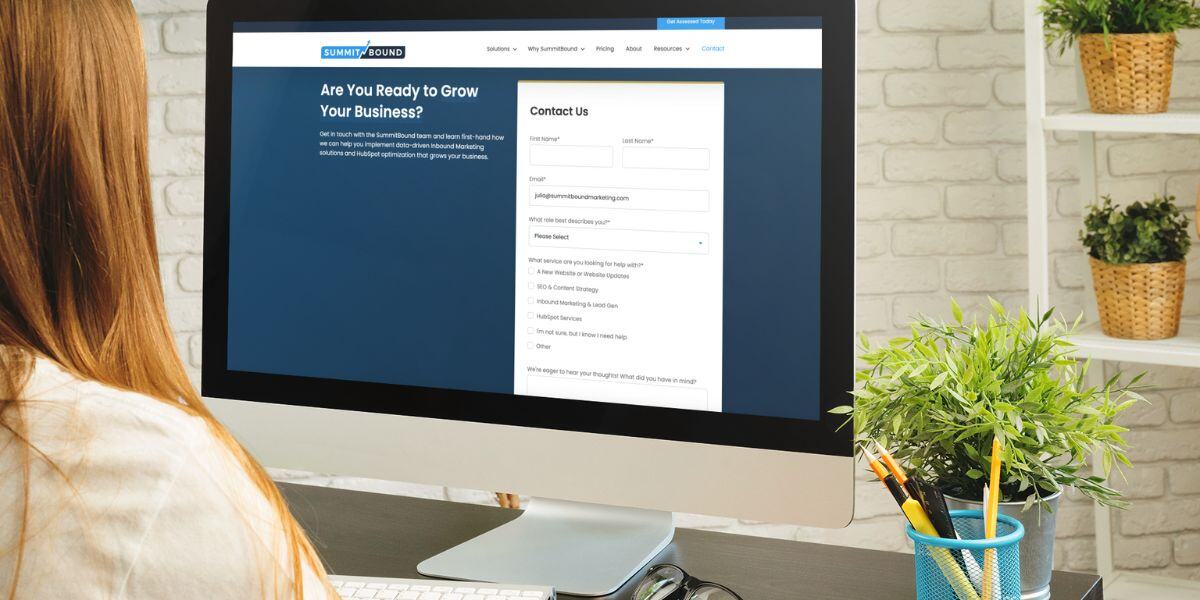Let’s be honest, many small and medium-sized businesses struggle to attract new customers - and many business owners never really see the ROI of their marketing strategies and website activity.
Traditional outbound marketing, like cold calls and generic ads, can feel impersonal and often yield limited results, while many websites fail to truly engage their target audience or nurture visitors through their buyer’s journey.Yet with lead generation the top priority for marketers (HubSpot), what can be done to better attract potential customers who are experiencing challenges in the areas your business helps solve, and are potentially already interested in what you offer?
That's the power of inbound lead generation. In this blog, we’re going to take a deeper dive into everything Inbound lead generation and why it’s an important part of your company’s B2B Inbound Marketing strategy.
What is Inbound Lead Generation
Inbound lead generation is a strategic approach to attracting potential customers - or leads - by creating valuable content and offerings that draw them to your business. Instead of chasing after leads, you create a magnetic pull that attracts qualified leads who are actively searching for ways to address their challenges or, more specifically, for solutions like yours.
Inbound lead generation should be an important component of your overall B2B Inbound Marketing strategy, as it:
- Helps you attract high-quality leads
- Builds trust and credibility between your brand and your target buyer persona
- It’s cost-effective when compared with traditional outbound marketing techniques
- It enables you to nurture leads through their buyer’s journey, from awareness to consideration
- It allows you to track and measure Inbound Marketing results, so you can optimize and improve over time
What are Inbound Leads?
Inbound leads are potential customers who have shown interest in your brand by interacting with your marketing efforts. They might not be ready to buy right away, but they've taken a step toward learning more about your product or service.
Here are some examples of how someone might become an Inbound lead:
- Downloading an eBook or white paper from your website
- Subscribing to your email newsletter
- Registering for a webinar you're hosting
- Following you on social media
- Engaging with your content (liking, commenting, sharing)
- Visiting specific product pages on your website
There are two types of Inbound leads:
- Marketing Qualified Lead (MQL): An MQL has shown interest in your product or service and is considered a good fit for your marketing efforts. They might have downloaded an eBook, subscribed to your newsletter, or visited specific product pages on your website.
- Sales Qualified Lead (SQL): An SQL is an MQL who has been further vetted by the marketing team and deemed ready for the sales team to pursue. This could involve requesting a demo, scheduling a consultation, or expressing a clear buying intent.
How the Inbound Lead Generation Process Works
Inbound lead generation follows a four-stage process, nurturing potential customers and guiding them toward becoming loyal brand advocates.
Attract: This stage focuses on creating high-quality content like blog posts, infographics, or videos that address your target audience's pain points and interests. You can also leverage social media to establish your brand as a thought leader in your industry.
Convert: Once you've attracted visitors to your website, the goal is to convert them into leads. This might involve offering valuable downloadable content (eBooks, white papers) in exchange for their contact information.
Close: The qualified leads (MQLs) are then nurtured further with targeted email marketing campaigns or personalized outreach by the sales team. The goal is to guide them through the sales funnel and ultimately convert them into paying customers (SQLs).
Delight: Your relationship with the customer doesn't end after the sale. By providing excellent customer service, ongoing support, and exclusive content, you can transform satisfied customers into loyal brand advocates who recommend your business to others.
Key Inbound Lead Generation Strategies
- Content Marketing: Creating informative and engaging content that educates your target audience will help position your brand as an expert in your specific core topic areas. This helps boost where you rank in search, as well as engage your buyer persona. Focus on different content formats like blog posts, infographics, videos, or downloadable resources.
- Website Optimization: Ensuring your website is user-friendly, optimized for search engines, and mobile-responsive will enable you to capture leads effectively.
- Email Marketing: Build an email list and nurture leads with targeted email campaigns that provide valuable content and offers.
- Search Engine Optimization (SEO): Optimizing your website content and structure to rank higher in search engine results pages, will help your website attract organic traffic and reach your buyer persona(s).
- Pay-Per-Click (PPC) Advertising: Investing strategically in PPC advertising will help your business reach a wider audience and target specific keywords relevant to your ideal buyer persona.
- Social Media Marketing: Utilize social media platforms to connect with potential customers, share valuable content, and build brand awareness.
- Case Studies: Developing compelling case studies that showcase how your product or service has helped other businesses achieve success gives your website social proof, builds trust and positions your brand as a reliable solution.
Interested in learning about these Inbound lead generation strategies in more detail? Check out our blog, 7 Lead Generation Strategies That Truly Work.
If you’re not sure where to start. SummitBound Marketing would love to help you generate higher-quality leads. As a HubSpot agency, our team has years of experience delivering data-driven B2B Inbound Marketing strategies that help our clients generate leads.
Reach out to us today to get your existing marketing program assessed.
Tags:
Lead GenerationJune 25, 2024


